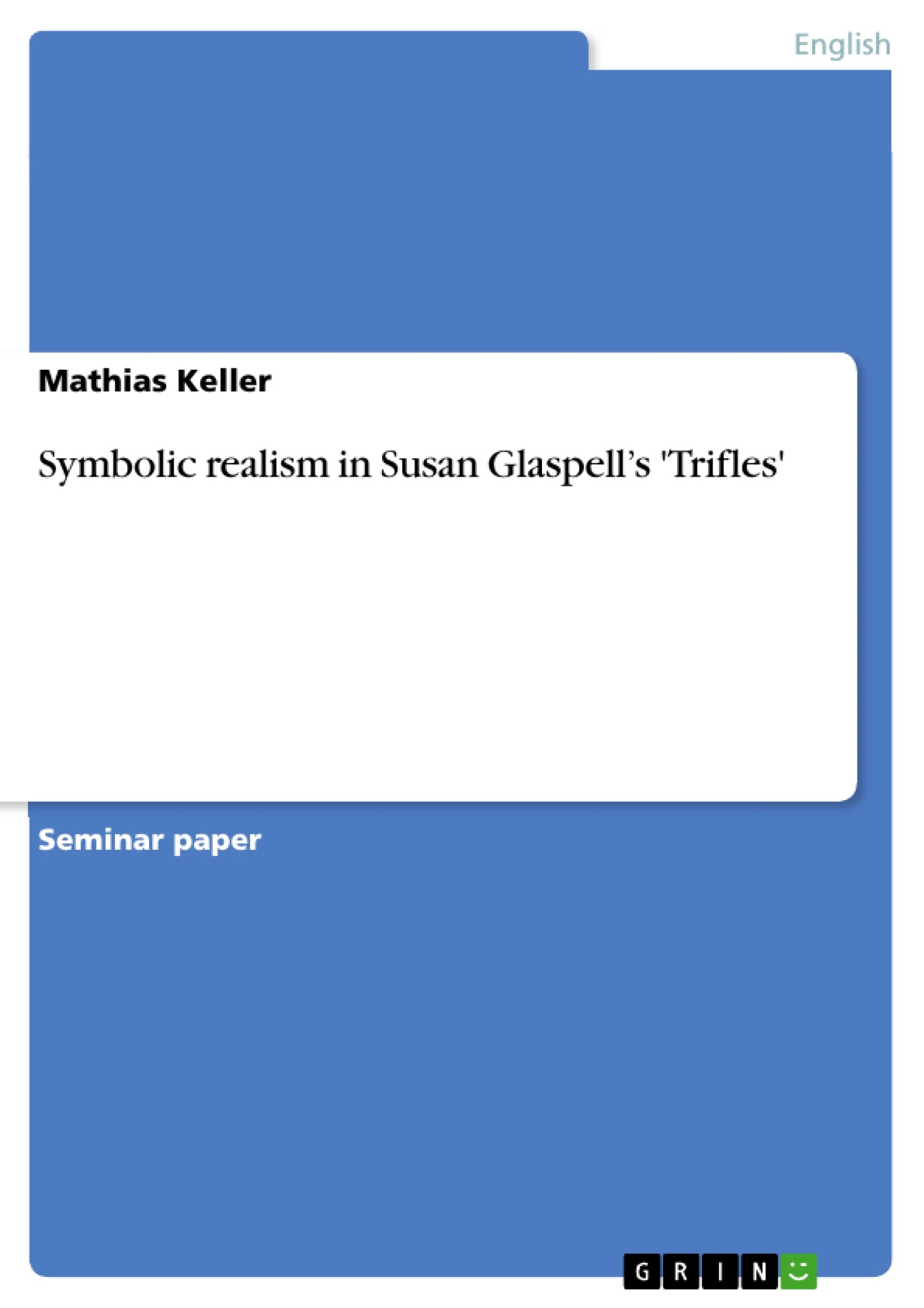Susan Glaspell’s (1876-1948) literary career increased in significance when she and her husband George Cram Cook moved to their summer residence in Provincetown, Massachusetts, in 1915. They founded the Provincetown Players, a group of dramatists who were about to change the development of American literature considerably. Against the more commercial and conventional Broadway plays, they shifted, as a part of the "’little theatre’ movement," the stage into a fisher’s house and performed experimental plays. One of these plays was Trifles, Susan Glaspell’s most reputed dramatic piece, which was first produced in 1916 and published in 1920. Her "first solo one-act play" is based on the Hossack’s case, a real murder incident in Iowa on December 2, 1900 when she was a news reporter. Her reflection of this incident deals with an investigation process which takes place in the farmhouse of the murdered John Wright and his imprisoned wife Minnie. The officials, Mr. Peters (the Sheriff), the County Attorney and the neighbour Mr. Hale, search for evidences in this house to convict Minnie of the murder. At the same time, the Sheriff’s and Mr. Hale’s wives, Mrs. Peters and Mrs. Hale, are supposed to collect clothes for Minnie. While they are in the kitchen, they encounter the important evidences to draw conclusions of Minnie’s miserable life, her deed and, hence, take the opportunity to influence the case by concealing the most crucial evidence from the men.
The play is innovative, among other things, in the respect that the main characters are absent and that Glaspell, as a consequence, creates a second explanatory level by means of symbols underneath the plot surface. This level circumscribes in detail Minnie’s misery and the reasons for killing her husband. By the same means Glaspell also generally criticizes the traditional gender roles by empowering the female characters and undercutting male authority.
Table of Contents
- I. Introduction.
- II. Minnie's Misery and Her Brutal Way out
- A. The Signs of Isolation and Silence...
- B. A Marriage without Love
- C. Minnie's Suppressed Creativity ......
- D. John's Strangling as the Symbolic Revenge.
- III. Glaspell's Critique on Gender Roles
- A. Symbolic Characters' Names...........
- B. Women's Superiority in the Investigation Process ........
- C. The Quilt as a Text to Be Read.....
- IV. Conclusion.
Objectives and Key Themes
The paper analyzes the use of symbolism in Susan Glaspell's play "Trifles" to examine the motives behind Minnie's act of killing her husband and to critique traditional gender roles in early 20th century America. The author uses the play's setting, characters, and stage properties to explore the themes of isolation, communication, and female empowerment.
- Minnie's isolation and lack of communication as a result of her oppressive marriage
- The symbolism of everyday objects in revealing Minnie's suppressed creativity and her husband's controlling nature
- The play's subversion of traditional gender roles through the female characters' astute observation and understanding of the situation
- The symbolic representation of female creativity and domestic skills as a means of challenging male authority
- The play's exploration of the nature of justice and the importance of considering individual experiences and perspectives
Chapter Summaries
The first chapter introduces the play "Trifles" and its historical context, highlighting Susan Glaspell's inspiration from a real-life murder case and her involvement in the "little theatre" movement. It also introduces the central characters, the setting, and the investigation process that unfolds in the play.
The second chapter delves into the symbolism surrounding Minnie's life and the reasons behind her act of murder. The author examines the setting, particularly the abandoned farmhouse and the kitchen, as symbols of Minnie's isolation and lack of communication. The chapter also explores the symbolism of Minnie's unfinished tasks, suggesting her troubled state of mind.
The third chapter focuses on Glaspell's critique of traditional gender roles through the characters' actions and the play's use of symbolism. The author examines the characters' names, their actions during the investigation, and the significance of objects like the quilt as symbolic representations of female empowerment and the limitations imposed upon women in society.
Keywords
The key words that define this analysis are: symbolic realism, gender roles, female empowerment, domesticity, communication, isolation, oppression, creativity, justice, "Trifles," Susan Glaspell, early 20th century American drama.
- Quote paper
- Mathias Keller (Author), 2005, Symbolic realism in Susan Glaspell’s 'Trifles', Munich, GRIN Verlag, https://www.grin.com/document/67508




